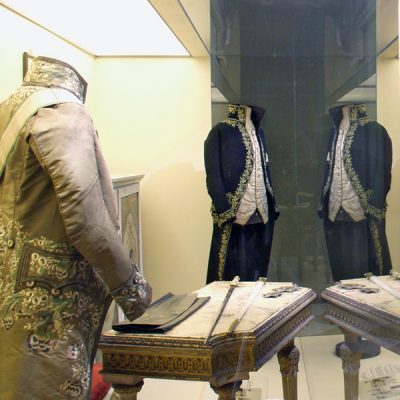The birth of the flag and the history of political events in Reggio Emilia from 1796 to the beginning of Restoration are documented in the Napoleonic hall. After the Reggiana Republic was founded on August 26, 1796 the Congress of the Cispadane Republic -meeting in Tricolore hall- approved a motion by Giuseppe Compagnoni to turn “the Cispadane banner or flag in the three colours of green, white and red, into a universal symbol”. The result was the Tricolore, a flag of a sovereign state which would soon become a symbol of independence and national unity.
The colours on Cispadane banner are arranged in three horizontal stripes: with red at the top, white in the middle, the green at the bottom. At the centre, a quiver with four arrows symbolises the union of the four peoples that joined the Republic, and the initials of the “Repubblica Cispadana” are placed at the sides. On July 9, 1797 the Cisalpine republic was created with the merger of the Transpadane and Cispadane Republics. “The flag of the Cisalpine Nation is formed by three bands that are parallel to the flagpole, with the green band next to the pole, the next band being white , and the third band being red”. In the spring 1799, the victorious advance of the Austro Russian armies forced Frach troops to retreat. After Napoleon’s victory at Marengo and the re-establishment of the Cisalpine Republic, the peace of Luneville between France and Germany was celebrated at Reggio Emilia with a great patriotic festival that featured a monumental architectural structure built in Piazza Grande as the scene backdrop. In the Italian Republic which was founded on January 26, 1802 and in the subsequent Kingdom of Italy, some of the most important government position were held by Reggio Emilia natives. Worth special mention are: Giovanni Paradisi, a senator and President of the Senate; Antonio Veneri, Treasury Minister and President of the Senate; scientist Giambattista Venturi, a diplomat assigned to Switzerland; and General Carlo Zucchi, who was promoted to General Inspector of the entire infantry of the Kingdom after taking part in all the Napoleonic wars.

